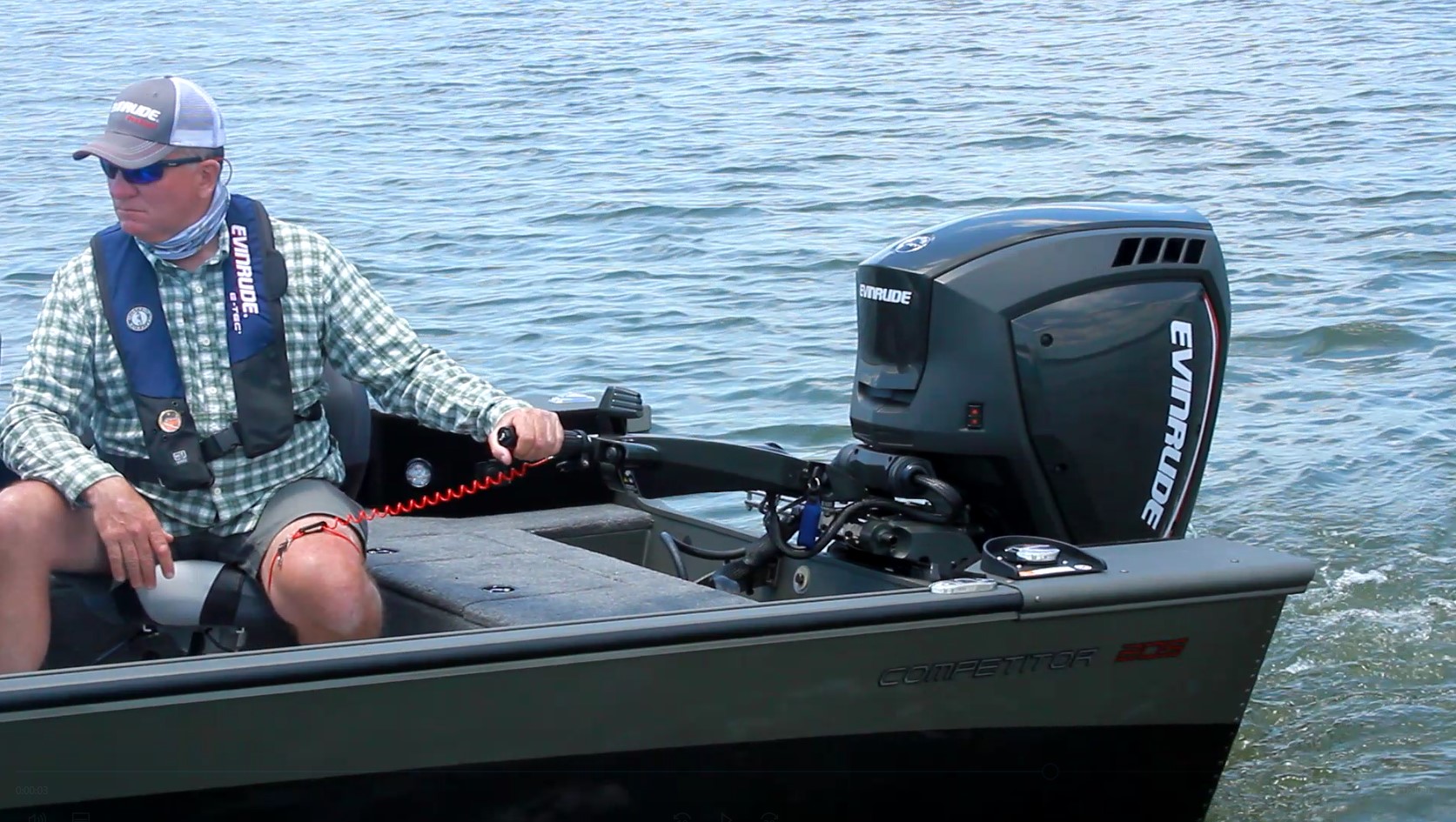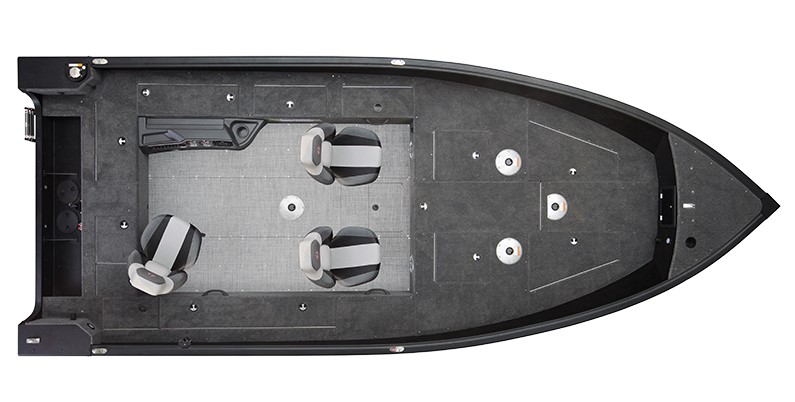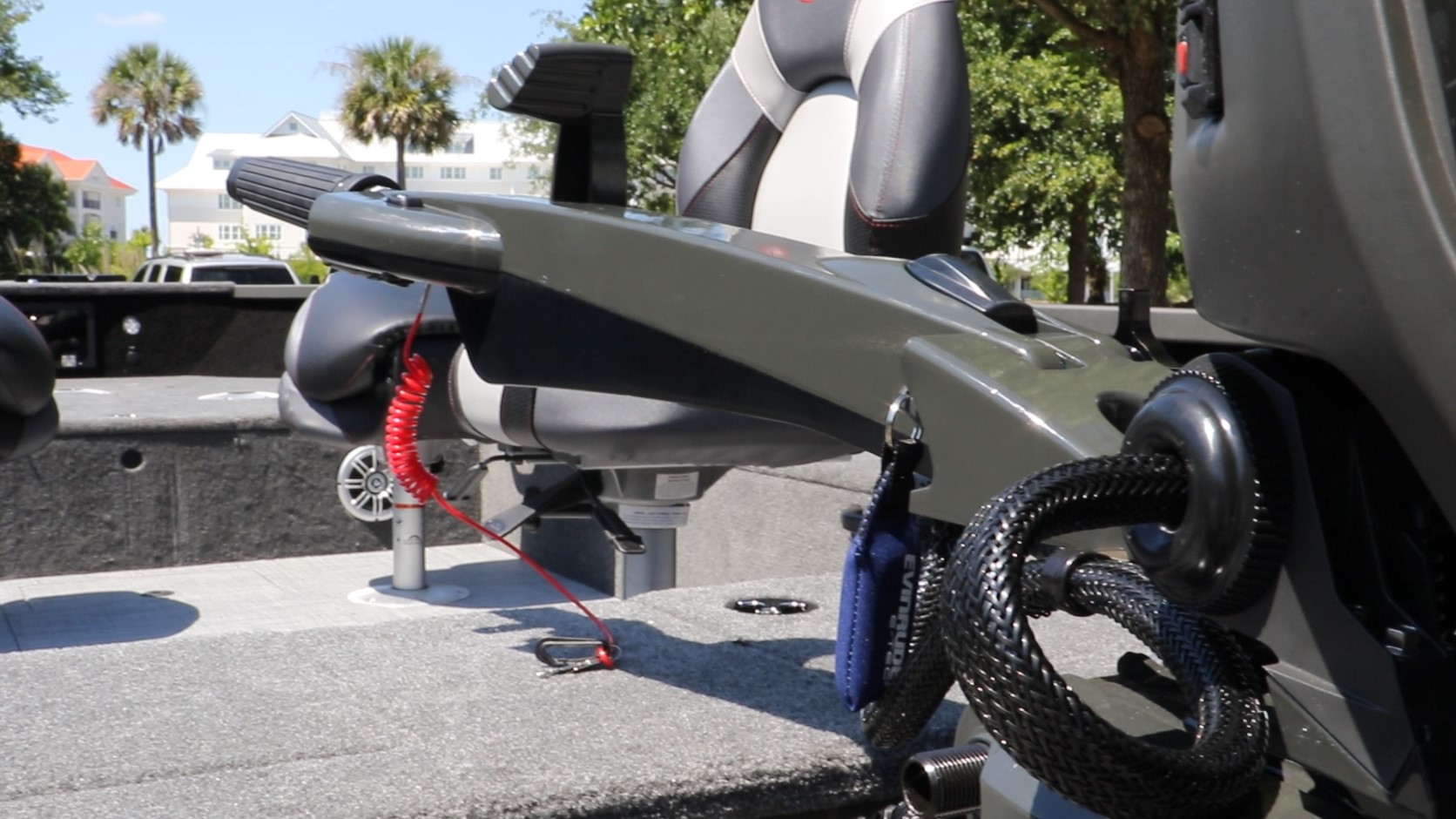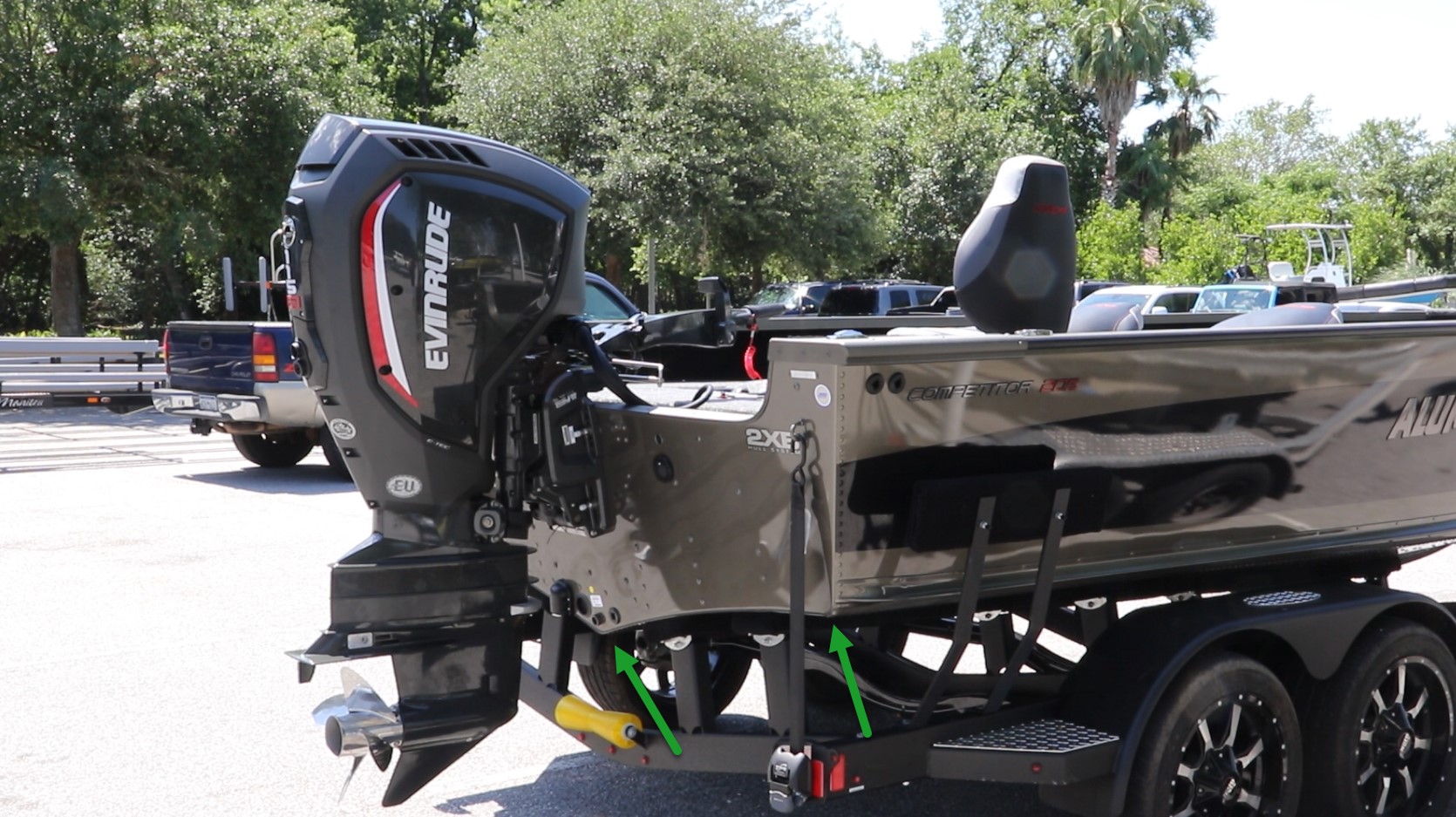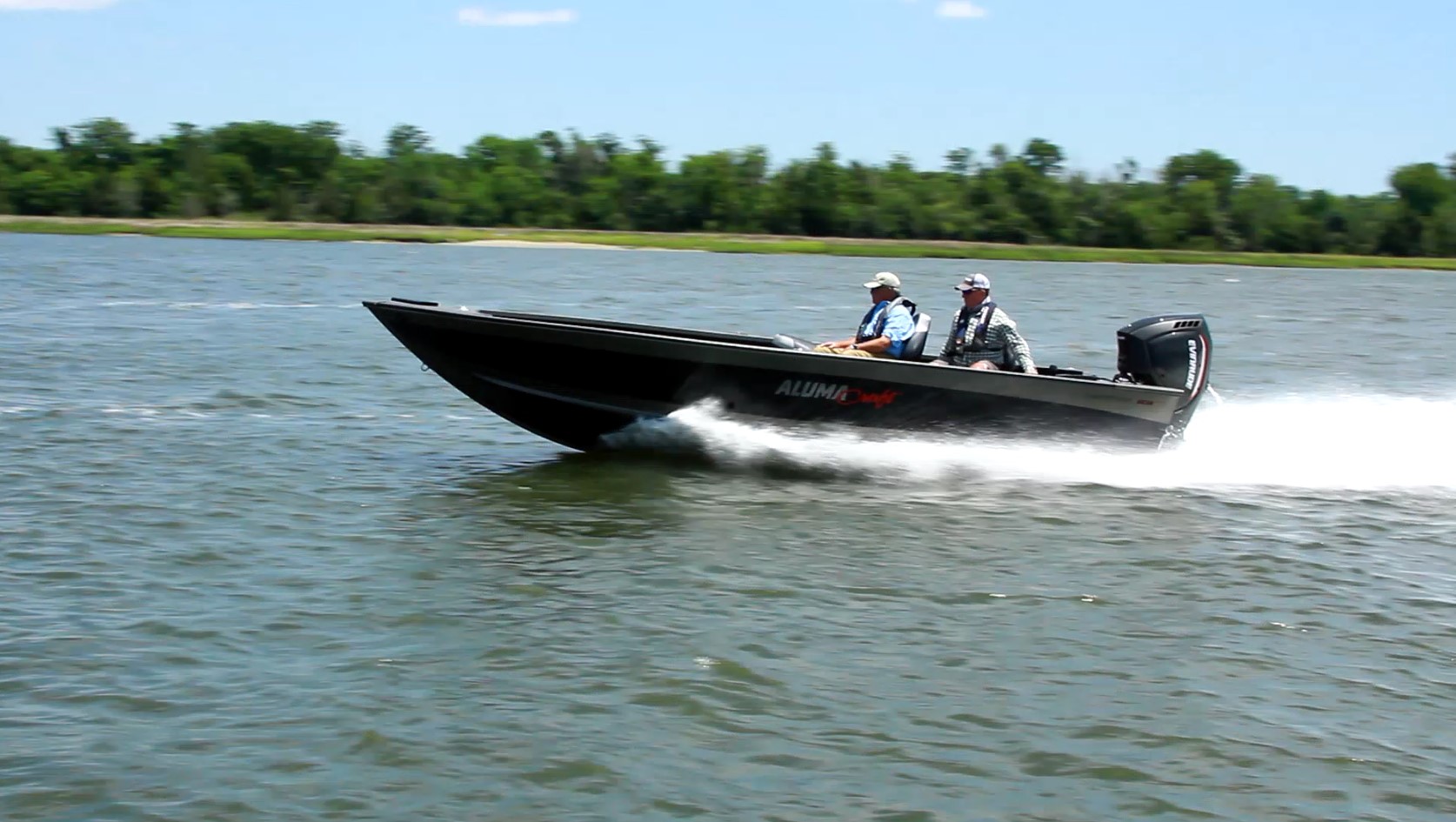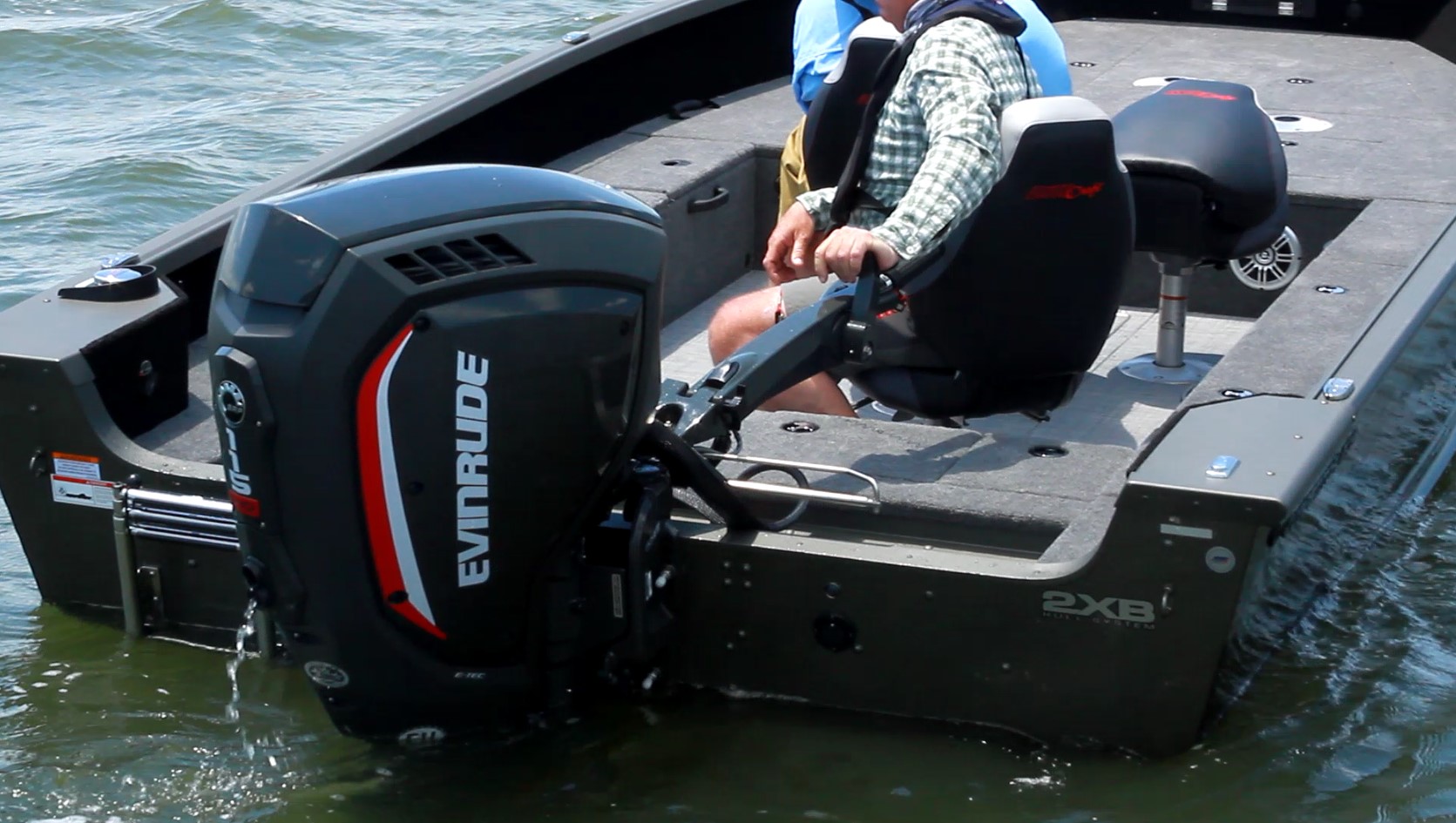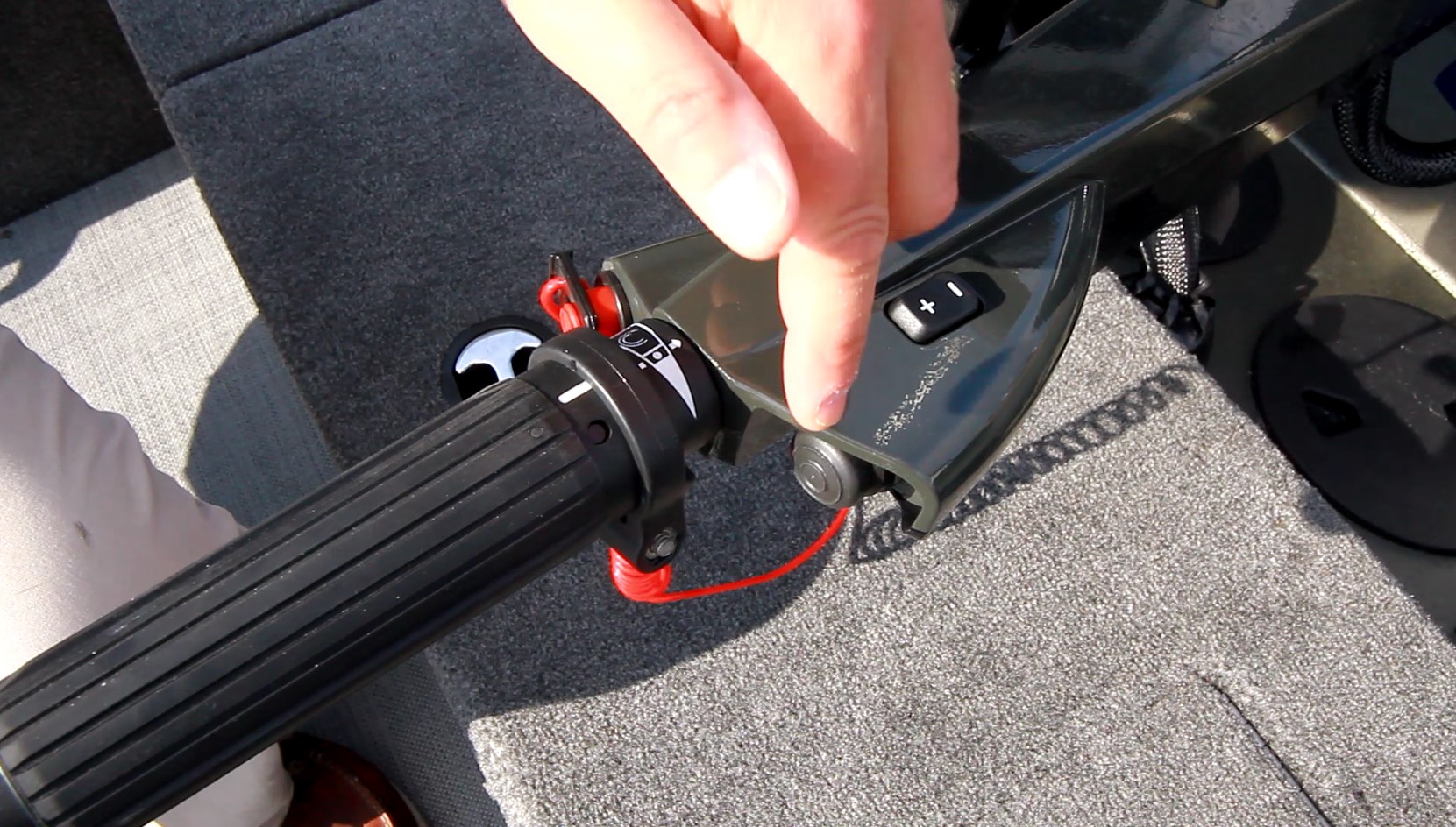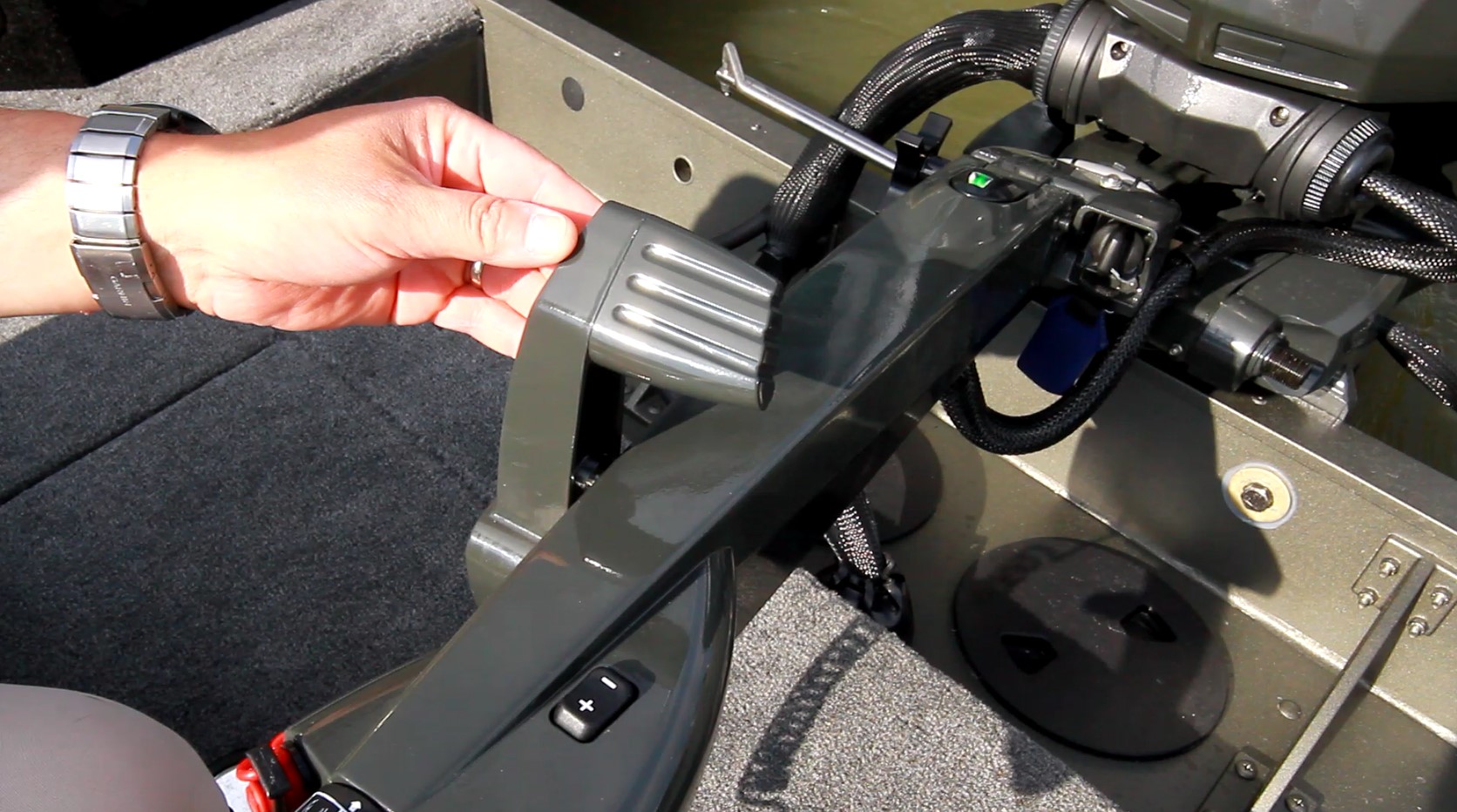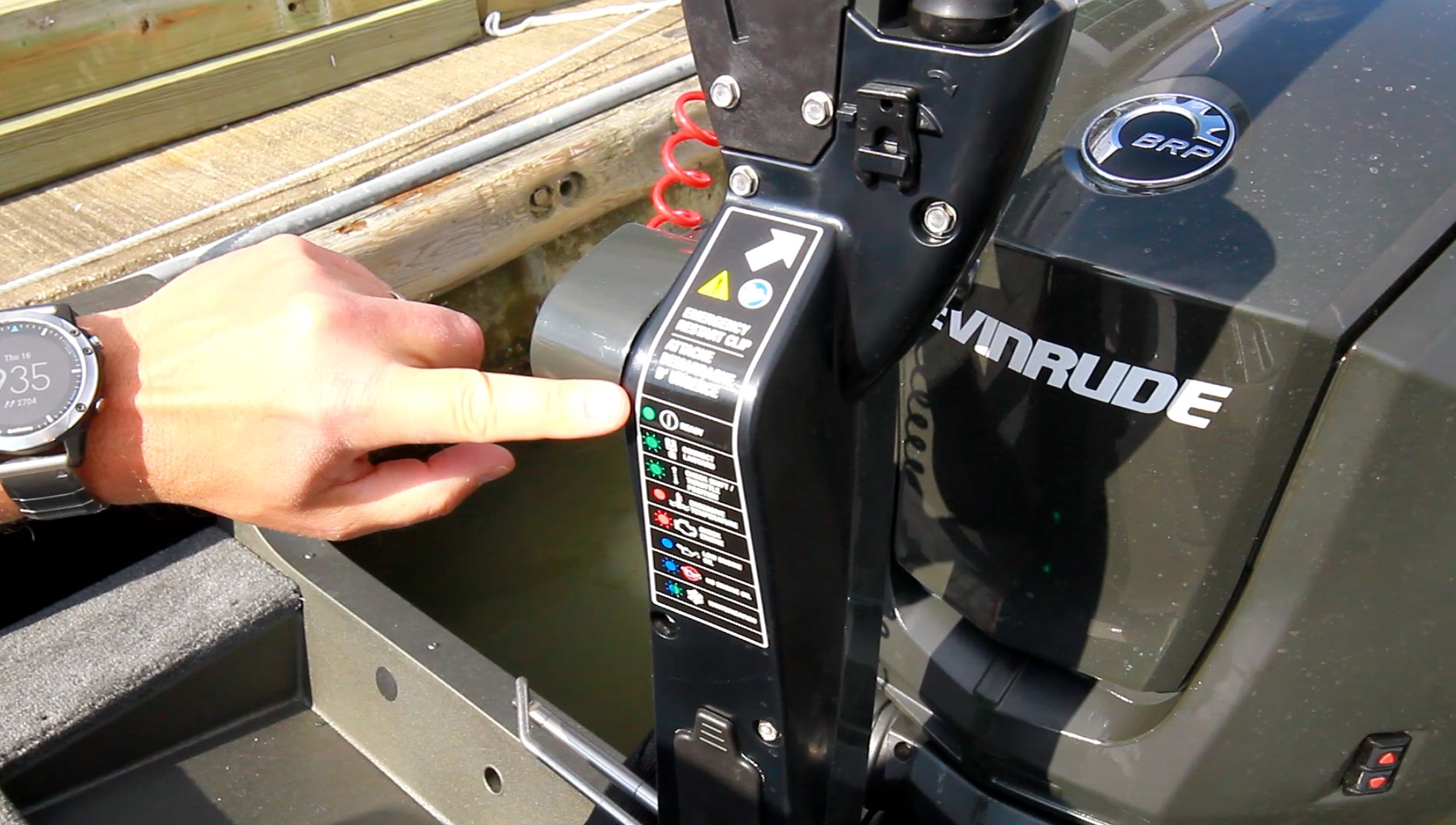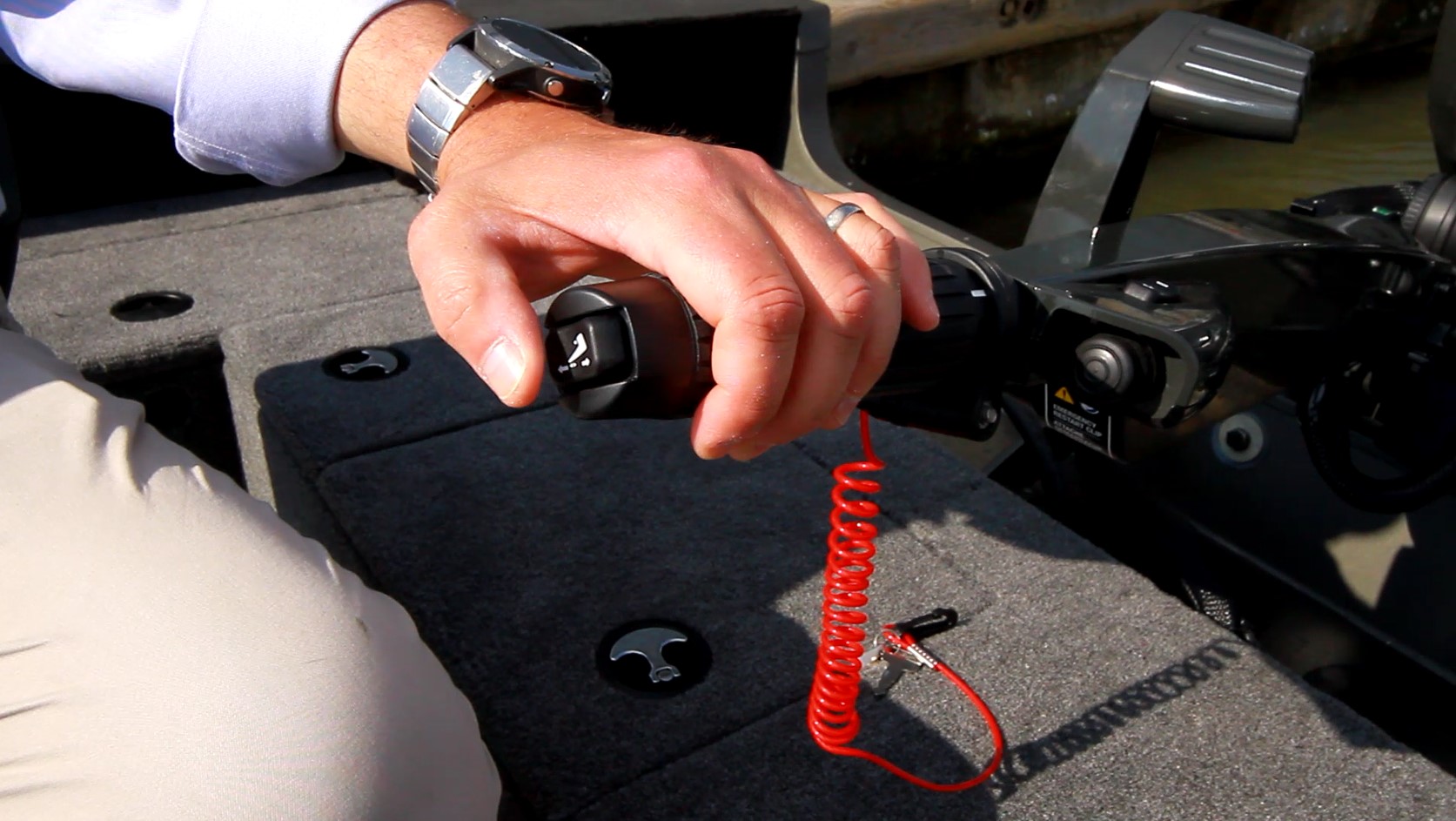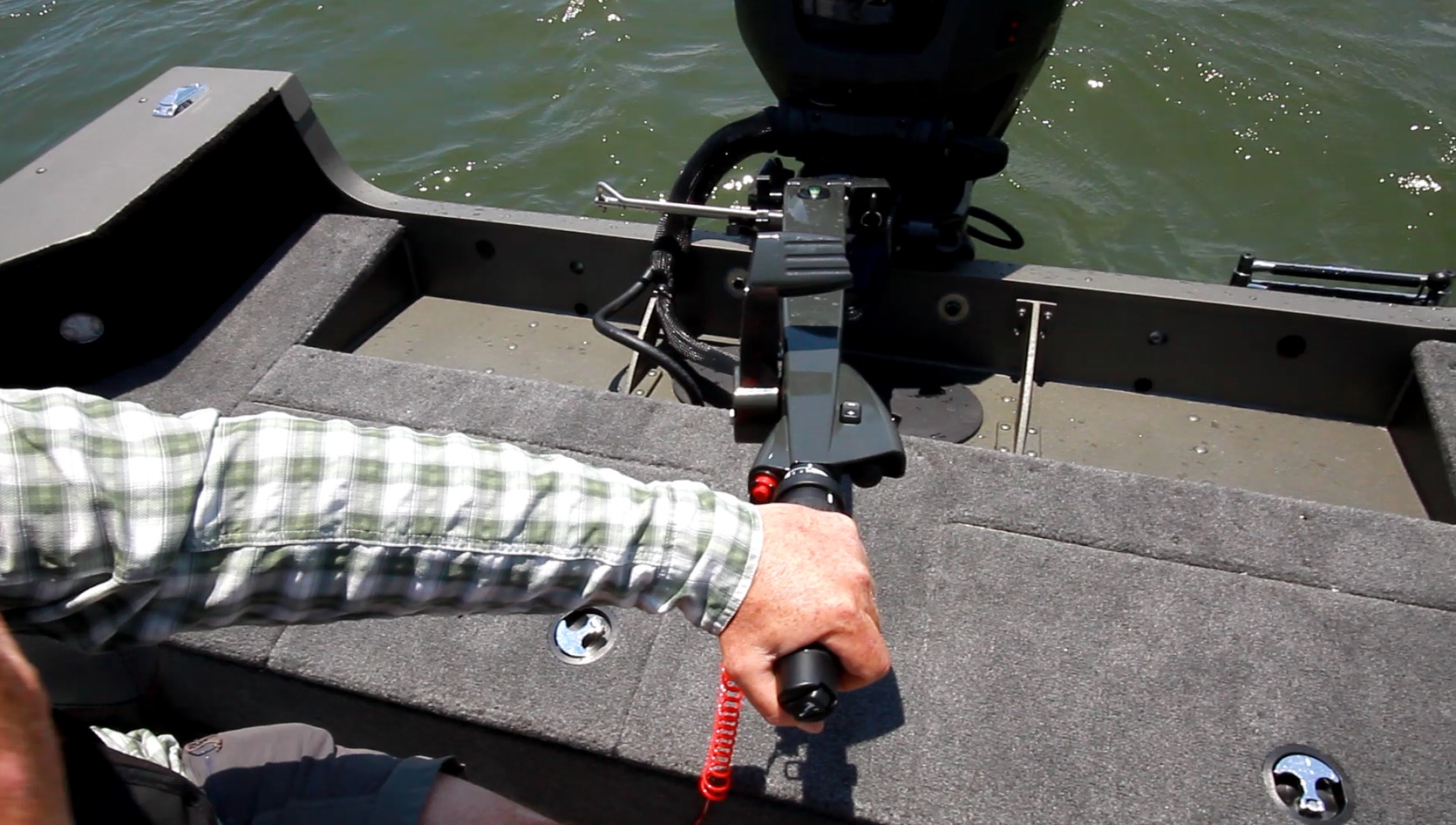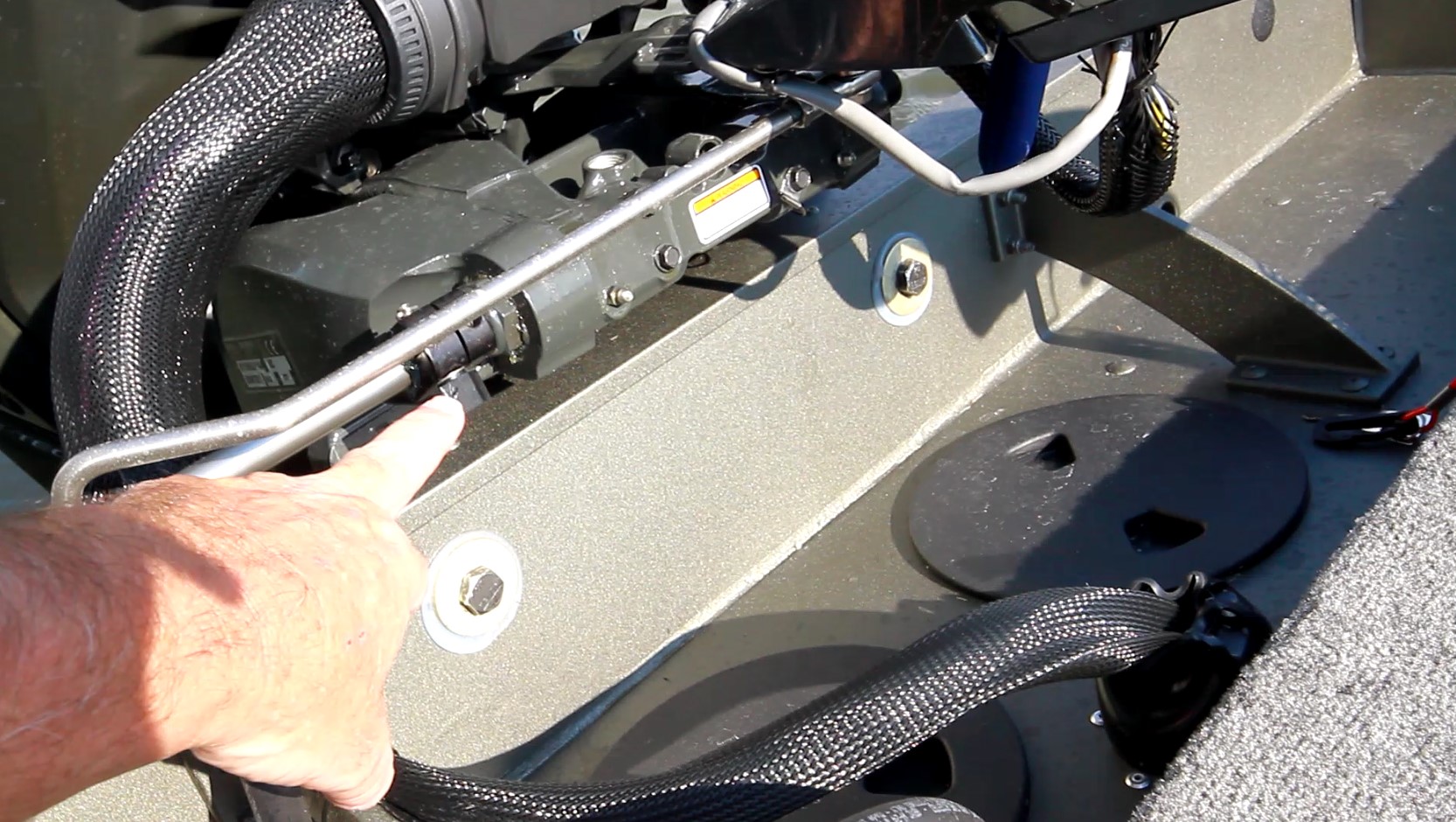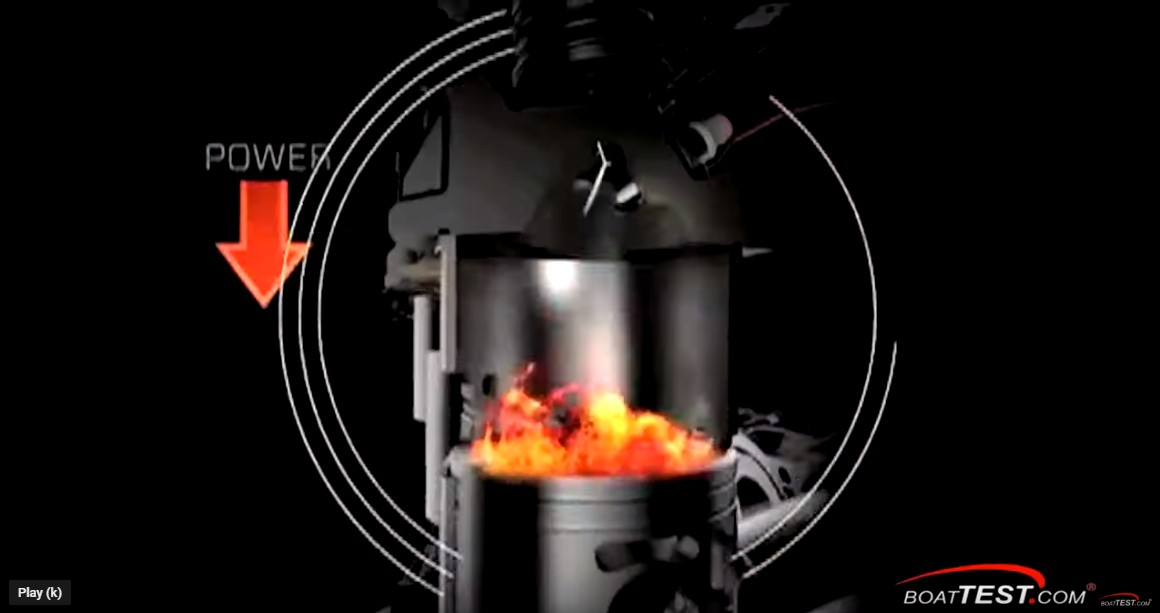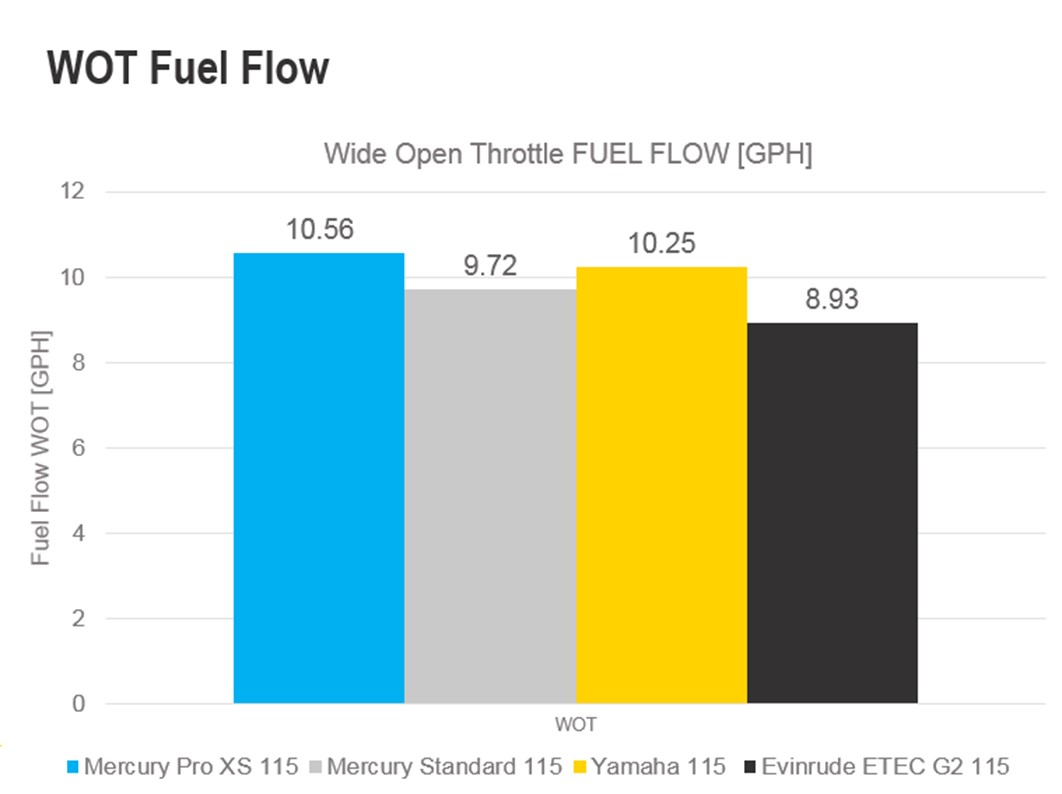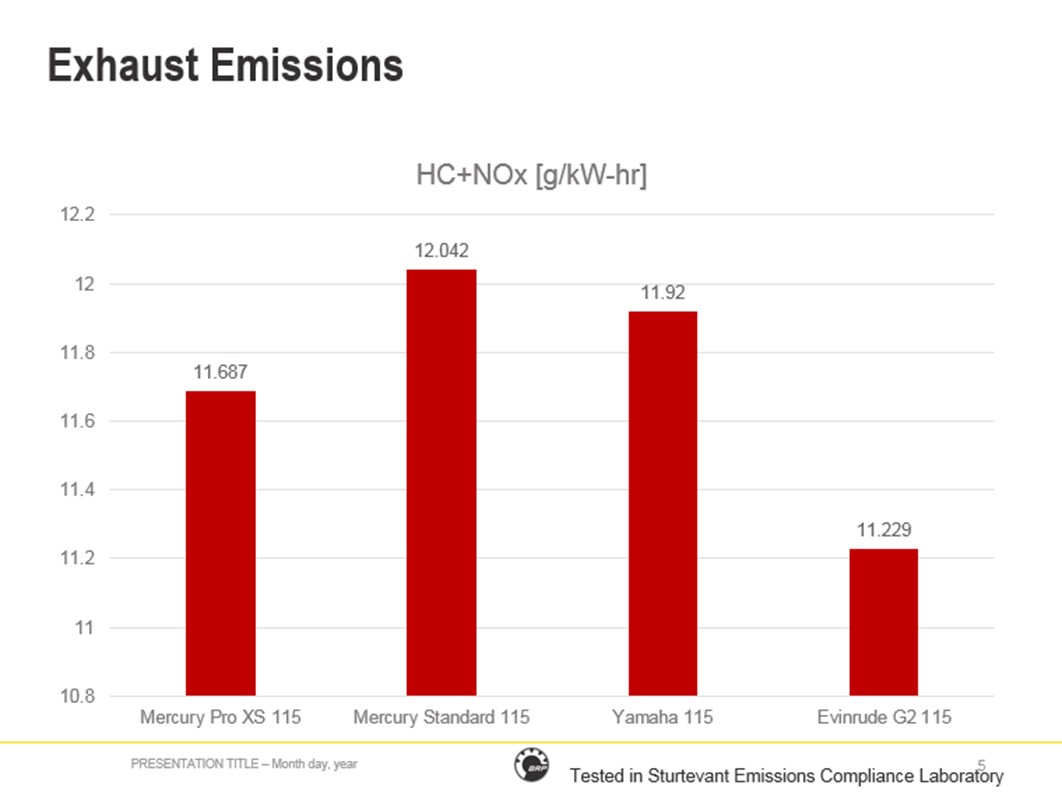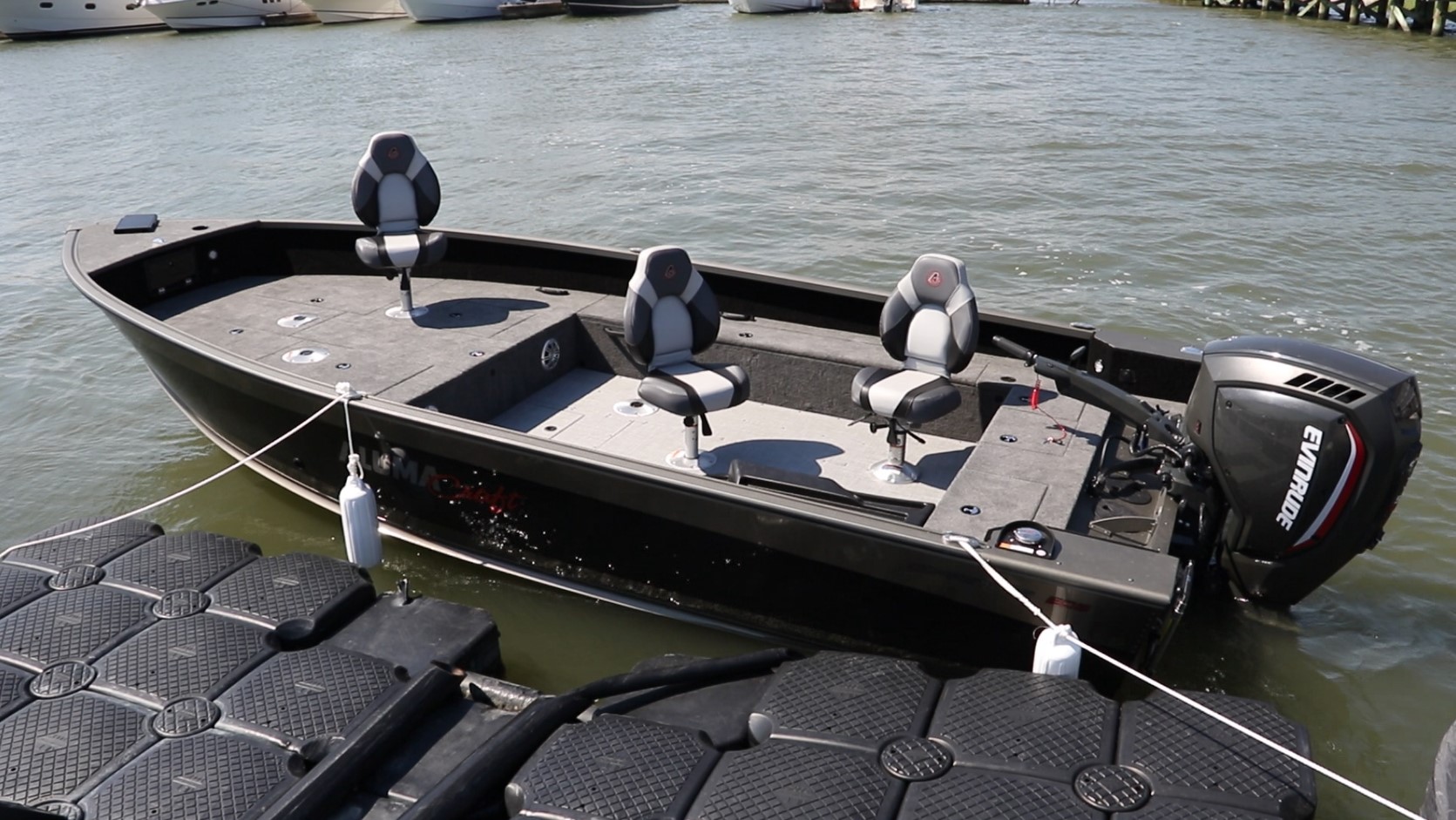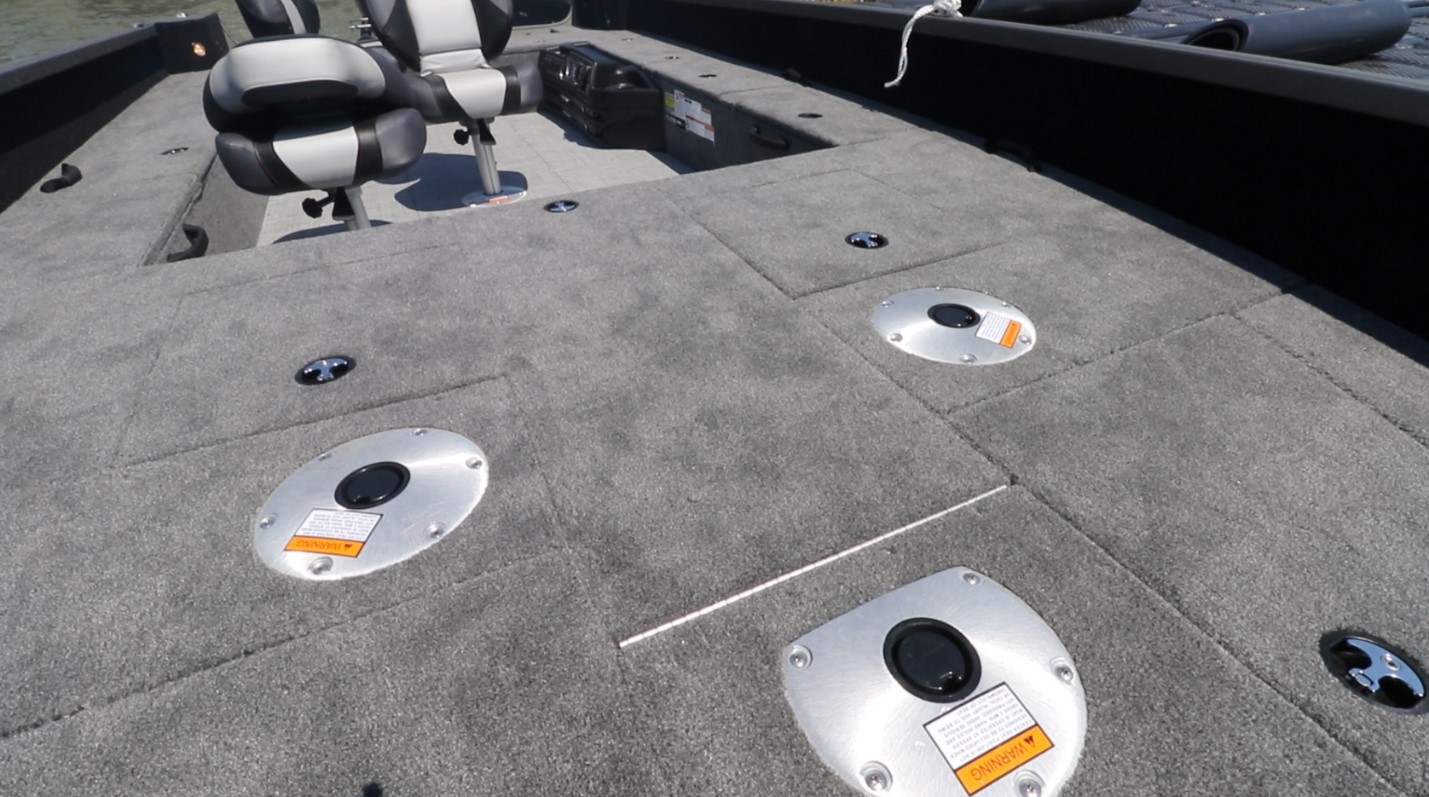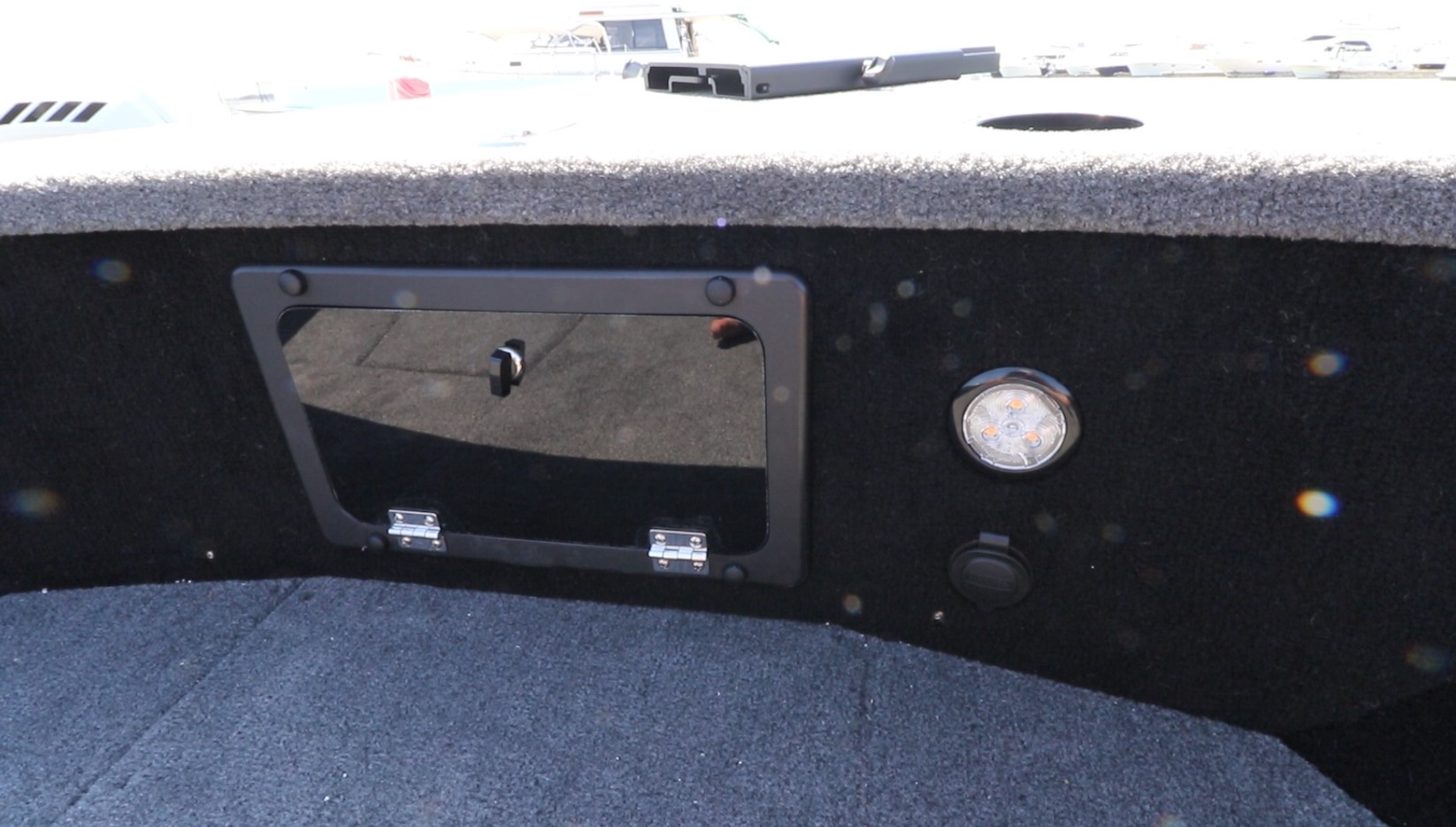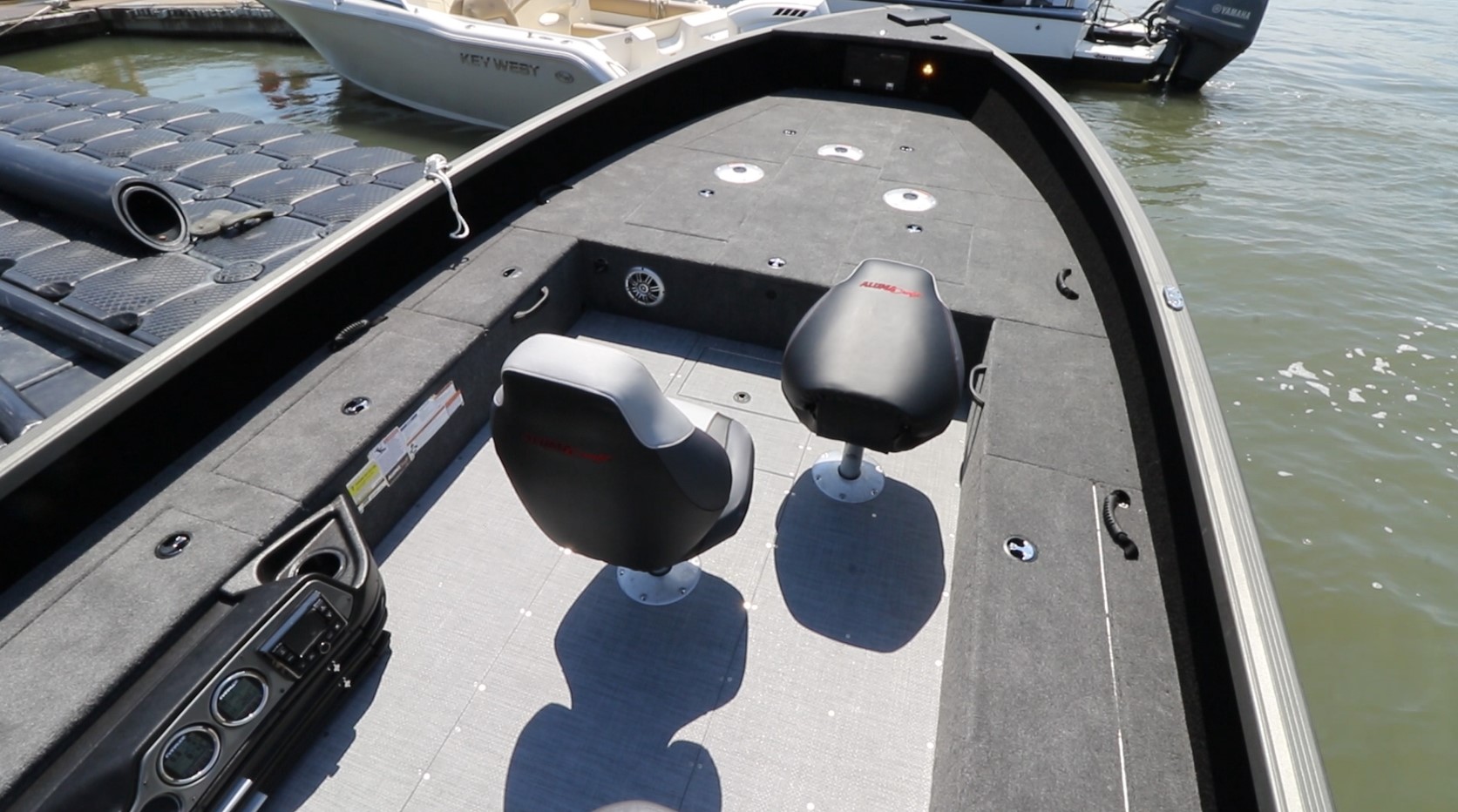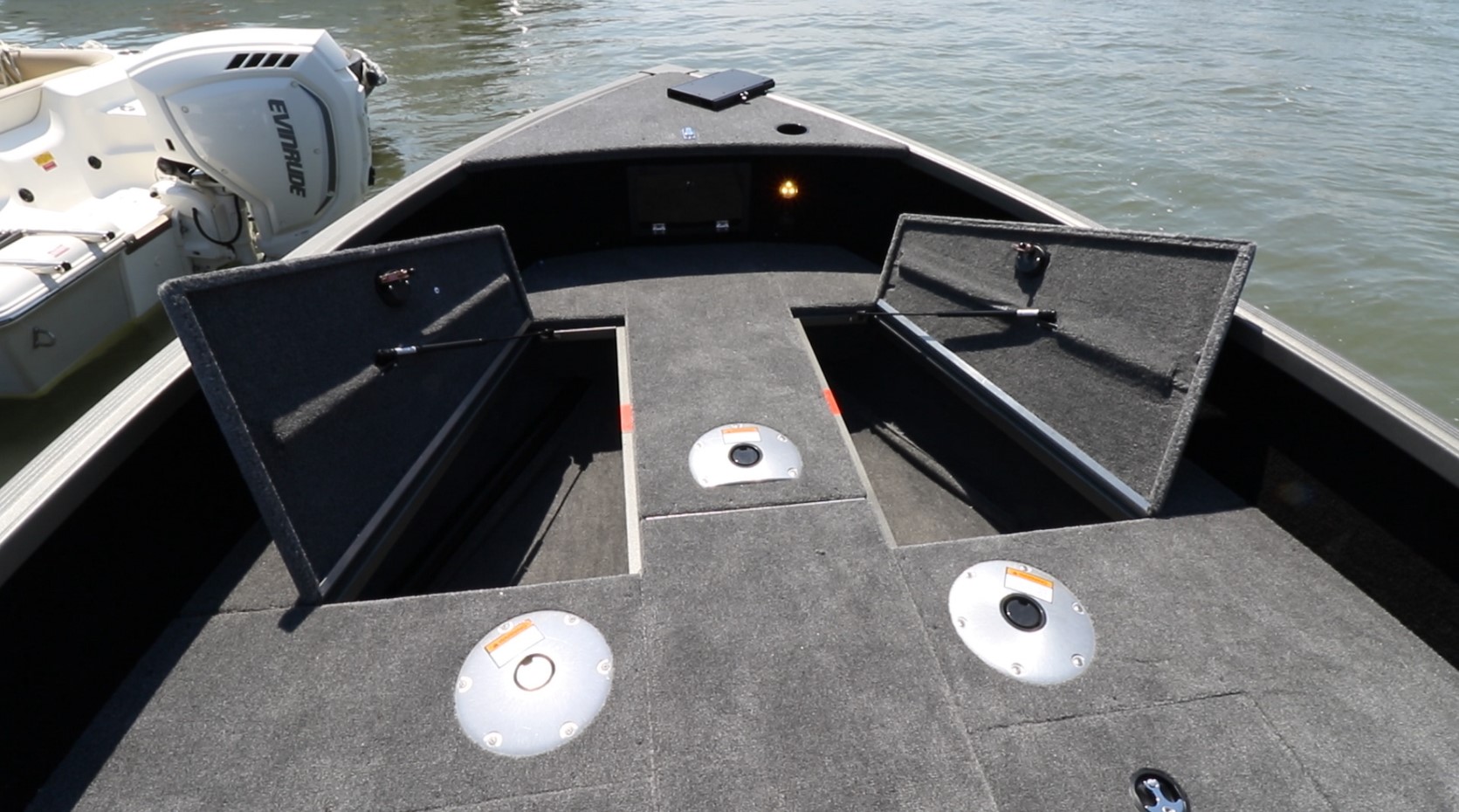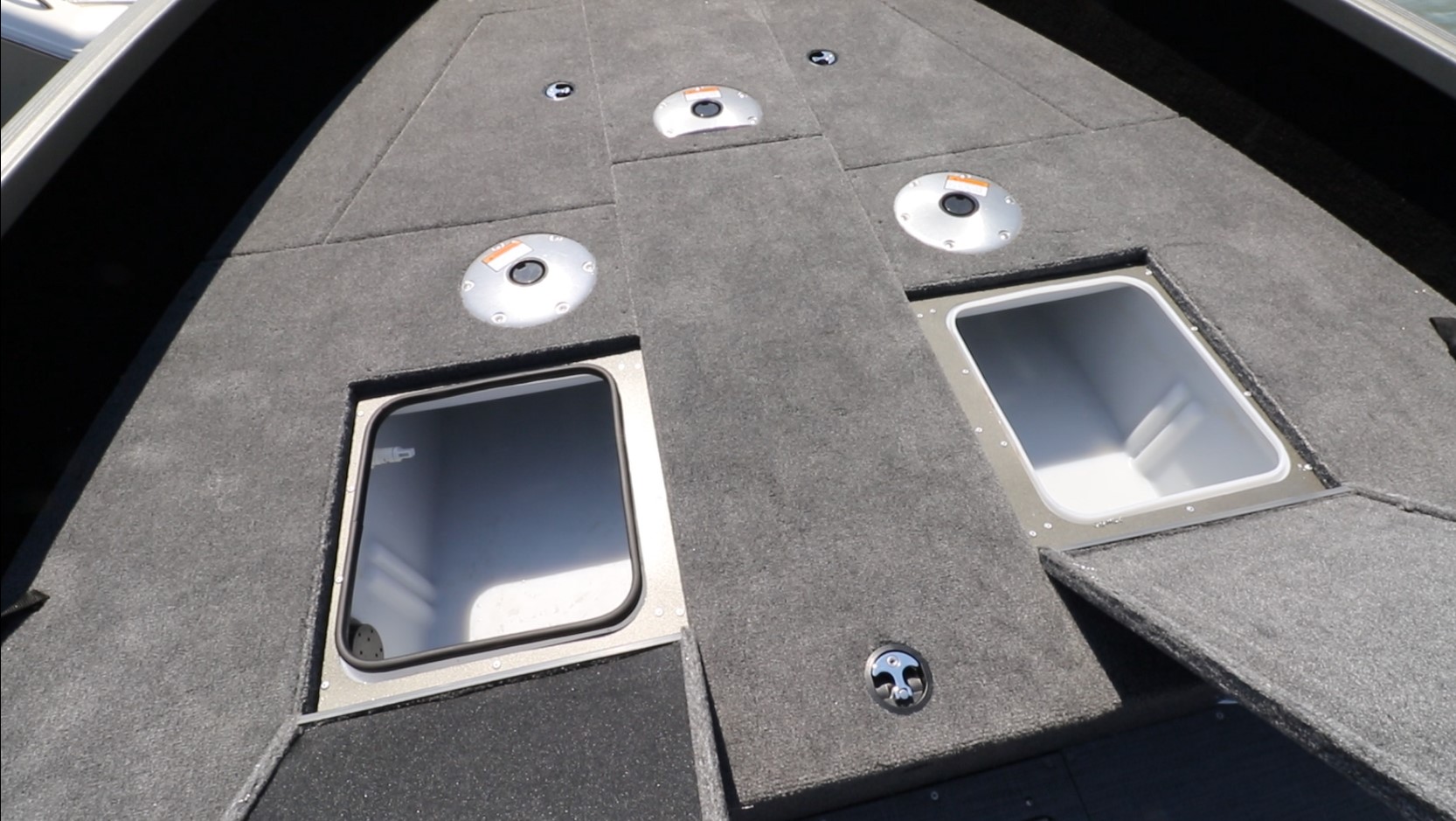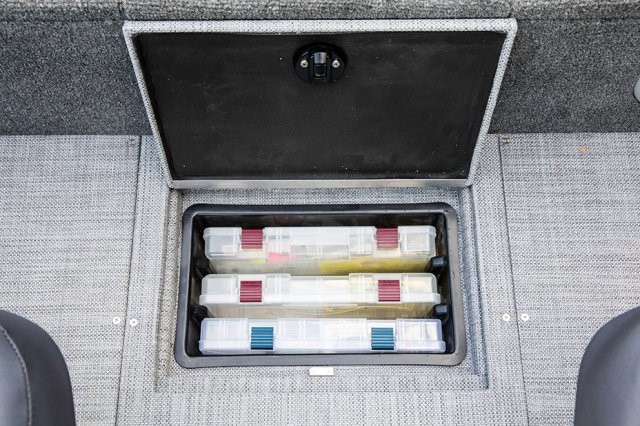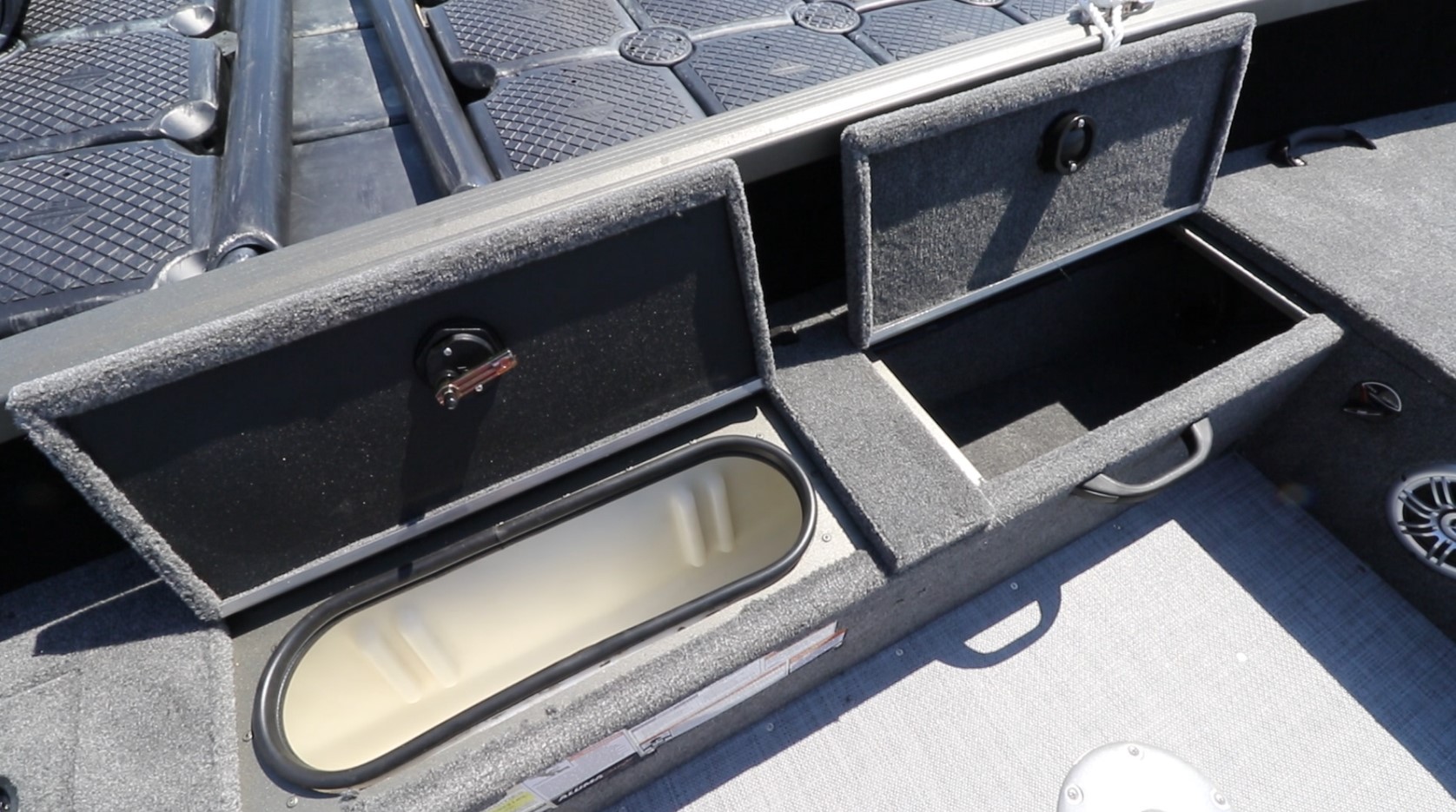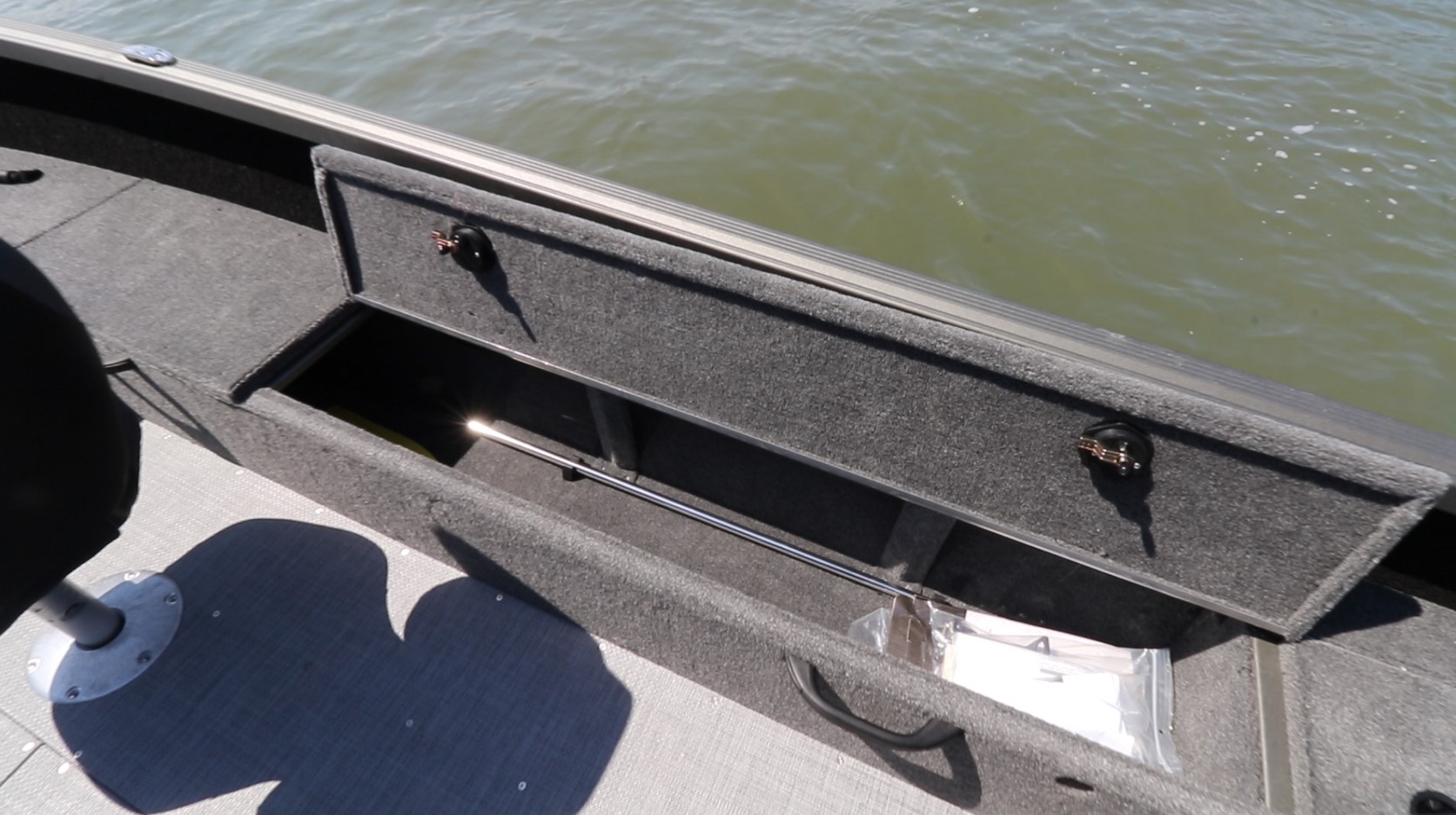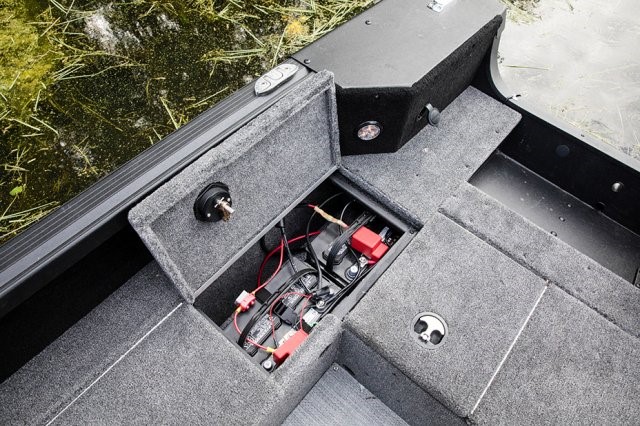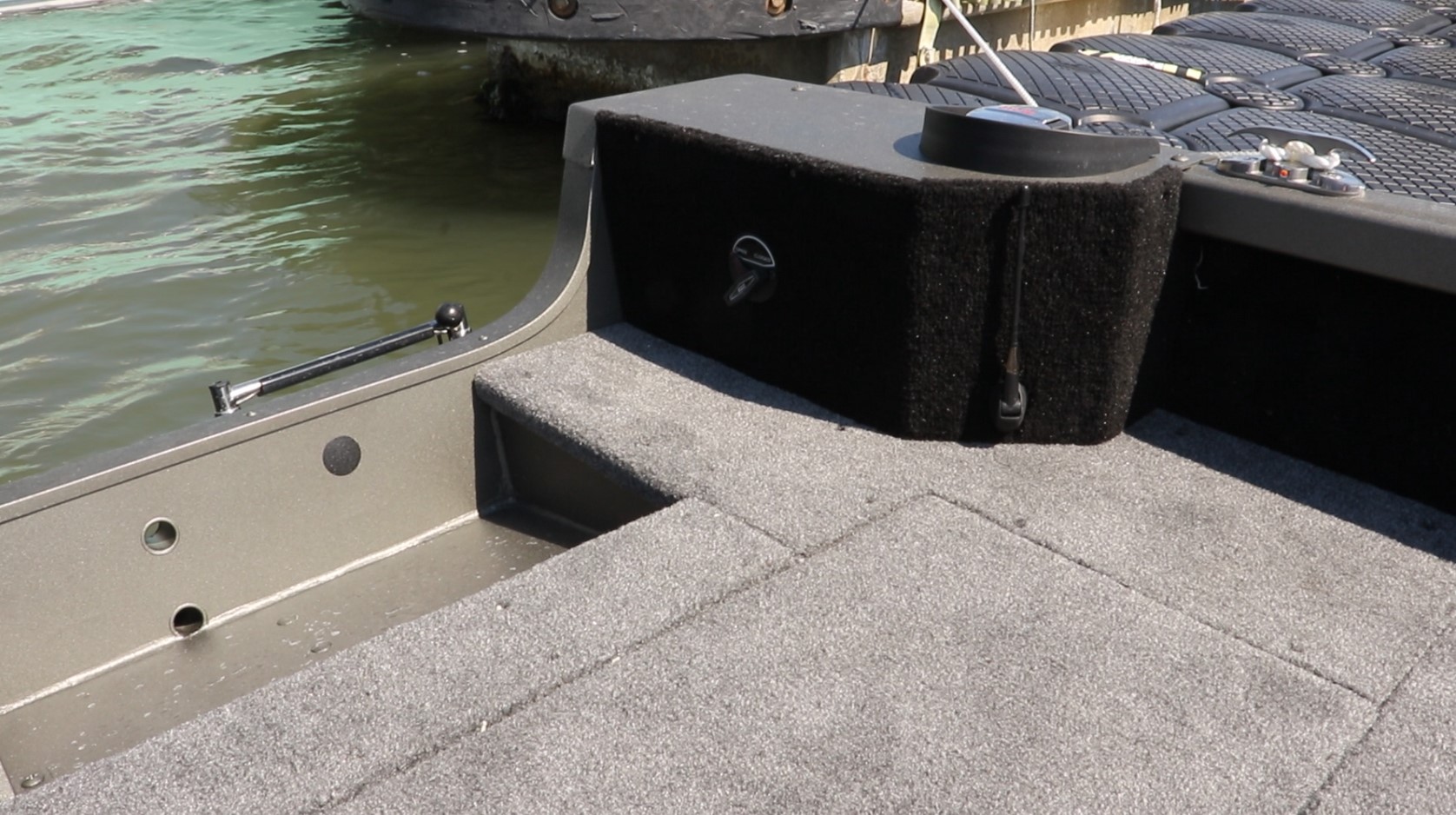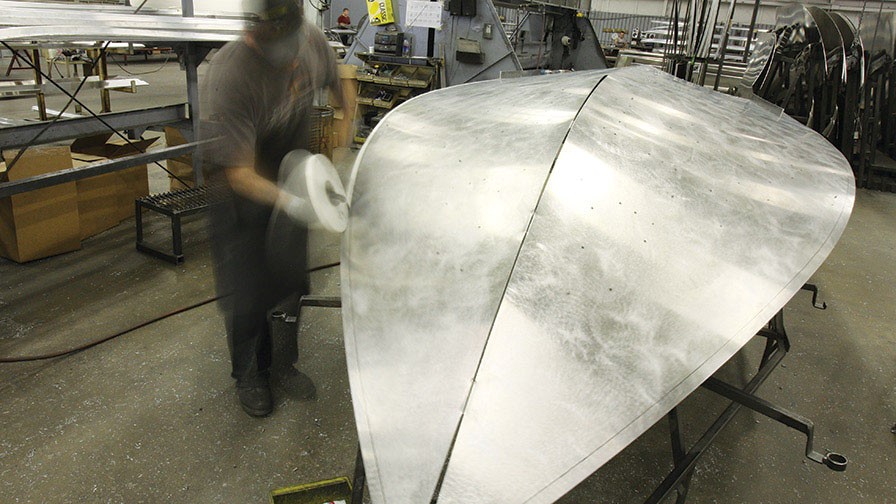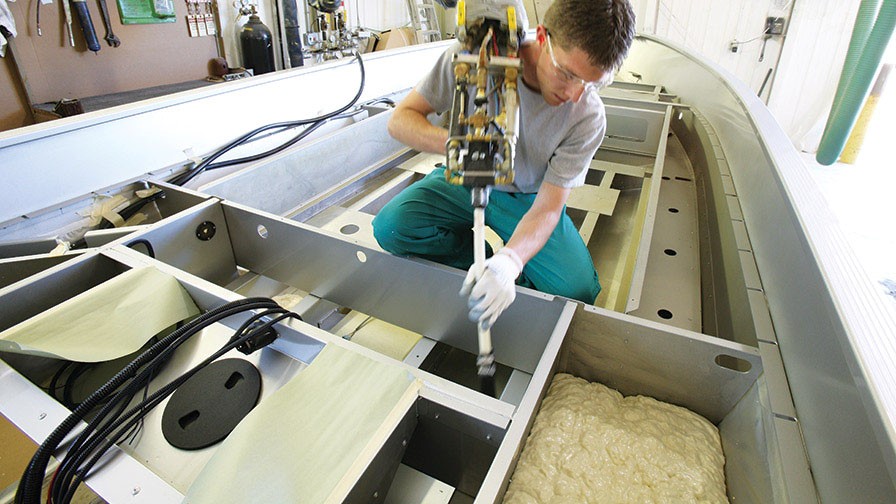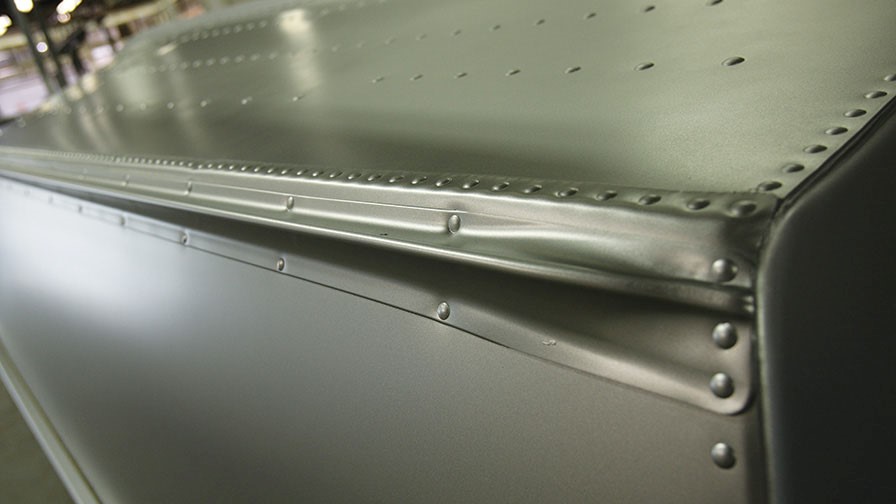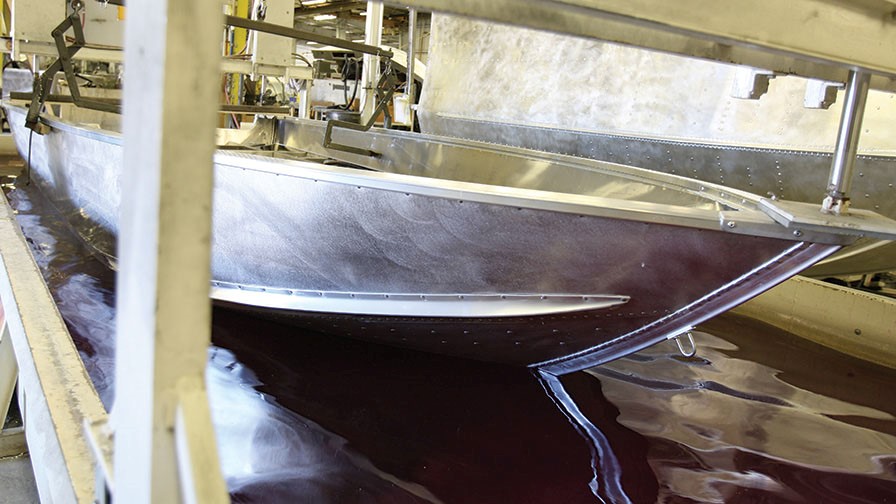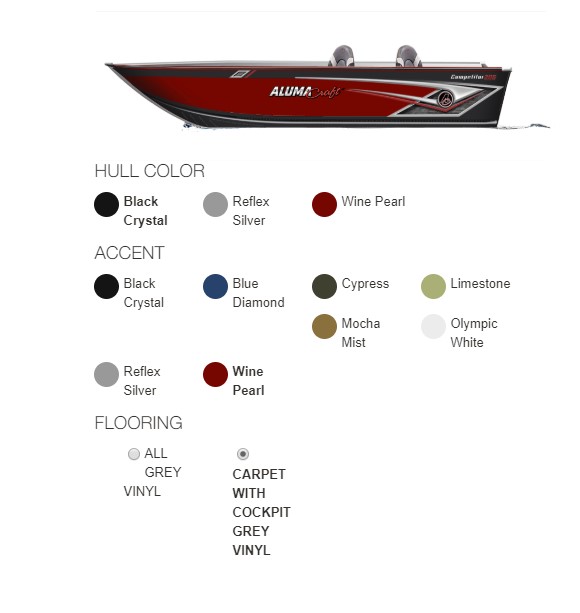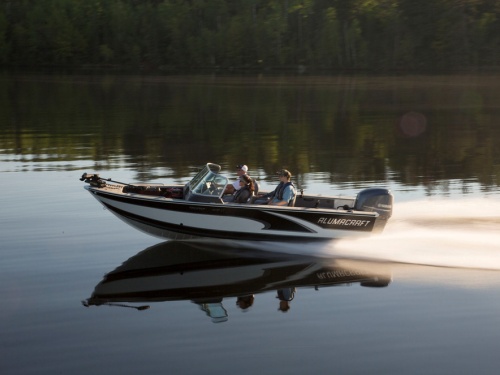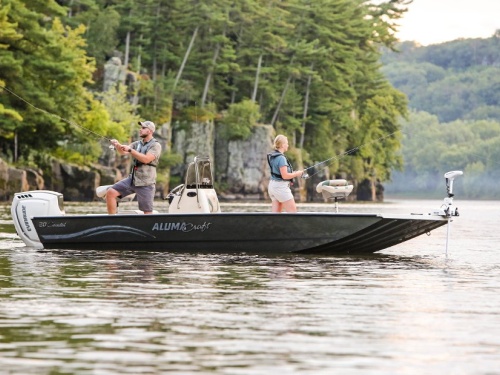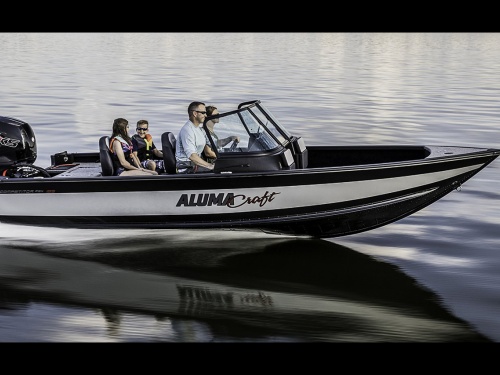Access More Boat Tests
Already have an account? Login
Alumacraft Competitor 205 (2019-)
w/ Evinrude E-TEC G2 115 H.O. Tiller
Brief Summary
The AlumaCraft Competitor 205 is an aluminum multi-species fishing boat powered in this test by Evinrude’s new 3-cylinder mid-range E-TEC G2 115 H.O. with the digital tiller handle.
Key Features
- Dual aerated livewells with timers
- Infinity PRV-315 AM/FM Bluetooth radio
- 13 gal. insulated cooler
- Driver's seat slider
- Bow dry storage
- Starboard rod storage for up to 10'
- 12/24 volt trolling systems
Test Results
| RPM | MPH | Knots | GPH | MPG | NMPG | STAT. MILE | NM | dBa |
|---|---|---|---|---|---|---|---|---|
| 650 | 3.2 | 2.8 | 0.2 | 16 | 13.9 | 648 | 563.5 | 69 |
| 1000 | 4.9 | 4.2 | 0.5 | 10.8 | 9.4 | 437 | 379.6 | 71 |
| 1500 | 6.9 | 6 | 0.8 | 8.6 | 7.4 | 347 | 301.5 | 74 |
| 2000 | 8.1 | 7 | 2 | 4.1 | 3.5 | 164 | 142.6 | 83 |
| 2500 | 17.5 | 15.2 | 2.5 | 7 | 6.1 | 283 | 245.8 | 84 |
| 3000 | 23.3 | 20.2 | 3.4 | 6.9 | 6 | 281 | 244.4 | 87 |
| 3500 | 28.5 | 24.7 | 4.6 | 6.2 | 5.4 | 250 | 217.8 | 88 |
| 4000 | 32.8 | 28.5 | 5.6 | 5.8 | 5.1 | 237 | 206 | 92 |
| 4500 | 38.1 | 33.1 | 7.7 | 4.9 | 4.3 | 200 | 174.3 | 97 |
| 5000 | 40.1 | 34.9 | 8.8 | 4.6 | 4 | 185 | 160.5 | 99 |
| 5100 | 41 | 35.7 | 9.4 | 4.4 | 3.8 | 177 | 153.6 | 100 |
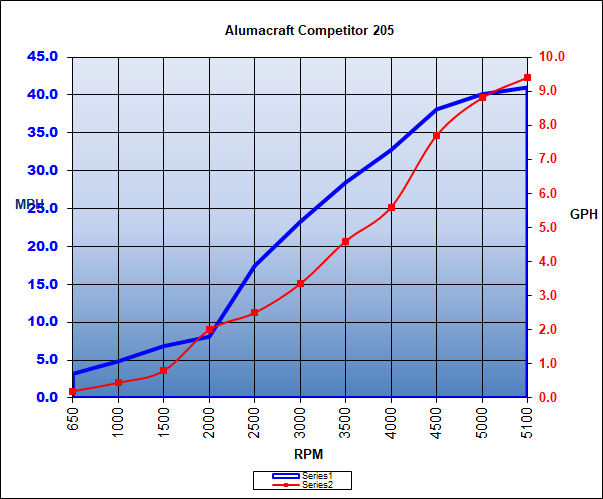
Specifications
| Length Overall |
20' 6'' 6.25 m |
|---|---|
| Beam |
96'' 2.44 m |
| Dry Weight |
1,616 lbs. 733 kg |
| Tested Weight |
2,707 lbs. 1,046 kg |
| Deadrise/Transom | 17-deg. |
| Weight Capacity |
2,450 lbs. 1,111 kg |
| Fuel Capacity |
45 gal. 170 L |
| Total Weight |
2,707 lbs. 1,046 kg |
Acceleration Times & Conditions
| Time to Plane | 3.9 sec. |
|---|---|
| 0 to 30 | 6.1 sec. |
| Ratio | 2.08:1 |
| Props | RX3 17 pitch |
| Load | 2 persons, full fuel load, no water, 50 lbs. of gear |
| Climate | 83 deg., 85 humid; wind: 10-17 mph; seas: 1-2 |
Engine Options
| Tested Engine |
Evinrude E-TEC G2 115 H.O. Tiller |
|---|
By Capt. Peter D’Anjou
Mission
All AlumaCraft aluminum boats are considered fishing boats, whether they are family-oriented or directed at professional anglers. The Competitor 205 is a multi-species fishing boat, the newest and largest at 20’6”, of the Competitor line.
Distinguishing Features
-
Single piece aluminum bottom 2XB hull
Major Features
- All-aluminum construction
- Tiller steering
- High-output 3-cylinder Evinrude outboard
- Twin aerated livewells with timers and lights
- AlumaTrac rail attachment system
- Infinity PRV-315 AM/FM Bluetooth radio
- Trolling system
- 8-person (2,450 lbs.) capacity
A trend in the recreational marine market for some time has been for a large corporation to own multiple marine manufacturers, for example, Brunswick Corporation’s ownership of boat manufacturers like Boston Whaler and engine manufacturer Mercury. Similarly, Bombardier Recreational Products or (BRP) owns Evinrude and several boat builders, of which AlumaCraft is one.
The major difference with BRP is that they don’t require that all the subsidiaries’ equipment be on the boat. Yes, you can buy It is possible to buy an AlumaCraft with a different brand engine, or none at all, but BRP and Evinrude make the argument compelling enough that you a boater shouldn’t want to (more on this later).
The fact that Evinrude designed the new 3-cylinder 115-hp High-Output mid-range engine with a tiller option specifically for boats like the Alumacraft Competitor 205 speaks to synergy and focus on what the customer wants.
Alumacraft, which started building aluminum boats after WWII, is focused on freshwater recreational fishing boats. They produce 16 lines of fishing boats - the Competitor line has four sizes: 16.5’ (5.03 m), 17.5’ (5.33 m), 18.5’ (5.64 m), and the largest and newest Competitor model, the 205 at 20’6” (6.25 m). Each size has three configurations: The Sport, which is a dual console with a steering wheel; the CS, a single console on the side amidships with a steering wheel; and the standard Competitor 205 which is a tiller-steered boat. All are built on the same 2XB hull.
While Alumacraft calls the Competitor 205 hull design a Deep-V, the deadrise of only 17-degrees at the transom does not qualify for this designation by BoatTEST’s subjective standards of a minimum of 20-degrees. However, 17-degrees in a freshwater boat is aggressive and still qualifies it for a V-designation, just not a Deep-V design in our book.
Performance
The Numbers. It’s not every day that we see a 115-hp outboard operated by a tiller so let’s start with the performance. The Competitor 205 measures 20’6” (6.25 m) long with an 8’ (2.44 m) beam. Empty weight is listed at 1,616 lbs. (733 kg). With two people, 45 gallons (170 L) of fuel and test equipment on board, we had an estimated test weight of 2,707 lbs. (1,228 kg).
Our test boat was powered by a single E-TEC G2 115 H.O. tiller outboard turning a 14.5” x 17” (36.83 cm x 43.18 cm) RX3 stainless-steel propeller. The prop is one of two new series of wheels (the RX4 is the other) designed for the new E-TEC motors.
Maintaining a firm grip on the tiller handle, we wound up the motor to 5100 rpm, hitting a top speed of 41.0 mph (66.0 kph). Best cruise came at 2500 rpm where we recorded 17.5 mph (28.1 kph) and a fuel burn of 2.5 gph (9.5 lph). That translated to 7.0 mpg (2.97 kph) and a range of 283 statute miles (455 km) while holding 10 percent of the boat’s 45-gallon (170.34.-liter) fuel capacity in reserve.
Acceleration
In acceleration tests, the Competitor 205 took advantage of the E-TEC G2 115 H.O.’s torque, planing, and running through 20 mph (32 kph) in 3.9 seconds and eclipsing 30 mph (48 kph) in 6.1 seconds.
Time-to-plane: 3.9 seconds
0 to 20 mph: 3.9 seconds
0 to 30 mph: 6.1 seconds
We tested the Competitor 205 in light chop.
The Motor and Tiller
We promised a little closer examination of the new engine and why it is a compelling reason to match with Alumacraft’s Competitor 205, or any other boat for that matter.
Tiller
Evinrude released their new tiller with the announcement of the mid-range 3-cylinder motors. The 115’s all-digital tiller is full fly-by-wire, which means no cables are required for rigging.
The key is hidden beneath a protective cover because it’s really only used at the beginning and end of a trip.
When the motor is trimmed, the tiller tilts independently to keep the driver in a comfortable operating position.
The tiller is at a slight angle when the motor is in a straight position. It’s designed with a 20-degree offset to port or starboard to make the operator more comfortable when running the motor.
Motor
Now let’s overview some of the other attributes of this 115-hp high-output motor. The 2020 Evinrude E-TEC G2 115 H.O. is the first 1.9-liter (113.1 cu. in.) inline 3-cylinder aluminum-block two-stroke outboard.
When comparing the Evinrude E-TEC G2 115 H.O. to other 115-hp engines from other manufacturers we find it to have:
- More torque
- Better fuel efficiency
- Lower emissions
The E-TEC G2 115 H.O. also has Evinrude’s exclusive direct fuel injection. The injector is in the cylinder, not on top of the intake manifold, hence the term direct-injection.
The engine’s brain, or EMM, controls the fuel and air delivery. With the computer-controlled EFI, the E-TEC G2 115 H.O. can idle down slow enough for back-trolling, which is a technique used when fishing for various species. This is important because it eliminates the need for a smaller kicker motor, saving the angler money.
In addition to delivering superior torque and better fuel efficiency, the engine is 3-Star certified for the California Air Emissions Board and legal to run in Europe.
Boat Inspection
Bow
Starting in the bow, there are sockets for three seats and plenty of space for fishing. The seats easily click in place and have contoured wraparound support to keep anglers comfortable when the fish are on the bite.
In the base of the foredeck, there’s glovebox style storage, a courtesy light and a 12-volt plug. Forward, the boat comes with a base plate for optional trolling motor. The boat comes pre-rigged for the motor.
Forward storage lockers open on gas struts and the hatches are reinforced on the underside. Twist and pull latches lock for security.
The central rod locker has space for four 9’4” (2.84 m) long rods. The ends for the rod butts are oversized and oval-shaped to accommodate spinning rods. The hatch opens on twin gas struts and has double reinforcements on the underside.
The 22-gallon (83 L) aerated livewells drain and have slots for dividers.
Working our way aft, and stepping down into the cockpit, an in-deck hatch opens to a storage compartment with a removable plastic tub that has dividers for Plano tackle boxes.
Stern. Aft to port in the cockpit, the helm station has accessory switches, twin Evinrude digital gauges and the AM/FM stereo alongside. The multifunction instruments provide all pertinent performance data.
Two drawers pull out from the base of the helm dash, but we’d like to see them on rollers so they function more smoothly. When the electronics clamp isn’t needed, it stores in the outboard port locker.
The starboard rod storage space also has a rack for securing long items, such as the anchor light.
A hatch in the aft starboard corner opens to reveal the batteries. To port, there’s space for two more batteries, but with the E-TEC G2 115 HO, they are not needed because its magneto charging system produces 50 amps of power.
On the transom to port, the four-step ladder extends 31” (.79 m) beneath the surface, which meets ABYC guidelines.
Construction
The 2XB hull was introduced by Alumacraft in 1996 and has been the company’s hull construction standard ever since.
Boats are painted in the same basecoat/clearcoat process and colors used by major auto makers. This allows the repair of scratches without repainting the entire boat. Matching touch-up paint can be found at most auto repair outlets.
With the goal of fewer rivets penetrating the hull, the opposite is true inside the boat where AlumaCraft installs larger ribs, with more rivets, spaced closer together to provide a rigid infrastructure.
Equipment Discussion
AlumaCraft lists the boat and trailer with no engine for $24,455. Several engines are available.
- Honda 115-hp (+ $11,591)
- Suzuki 115-hp (+ $10,085)
- Evinrude 115-hp HO (+ $11,208)
- Evinrude 150 hp HO (+ $15,365)
The boat is rated to handle up to a 200-hp engine.
There are 43 fishfinder electronics options and 19 trolling motor options (including no TM) available with the Alumacraft Competitor 205. The boat is prewired for 12/24/36-volt trolling motors. The available Minn Kota trolling motor lineup ranges from $1,138 to $3,681, not including mounts, in added cost.
Trailer
The standard trailer that comes with the 205 is a dual axle, steel trailer with 4,000 lbs. capacity and has 14” aluminum wheels, metal fenders, disc brakes, a swing tongue, spare tire, tie down straps, load guides, and LED lights. There are 13 other trailer options available.
Price
The boat is sold with a standard trailer and the Evinrude E-TEC G2 115 H.O. outboard at $36,479.
Optional Equipment
- Captain’s chair (air ride upgrade) ($686)
- Snap-in carpet (grey or tan) ($345)
- Snap-in marine mat (grey or tan) ($745)
- Bow cargo nets (P/S) 8 x 55” ($81)
- Speaker upgrade (two – 225 W Infinity speakers) ($93)
- Travel cover ($723)
- Evinrude 9.9-hp kicker (electric start) ($3,880)
- AlumaTrac rail accessories (rod holders, etc…) (various prices)
Observations
We like this boat’s layout over the Sport or CS models from a pure fishing standpoint because one can walk completely around the boat’s casting platform unhindered.
The Alumacraft Competitor 205 is a straightforward multi-species fishing boat that has everything anglers need for a successful day on the water and the Evinrude E-TEC G2 115 H.O. tiller will only heighten the experience.

